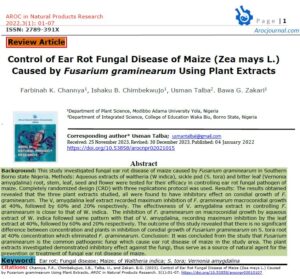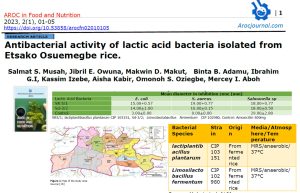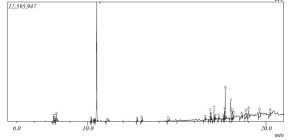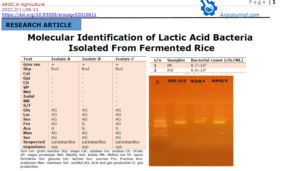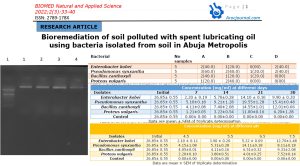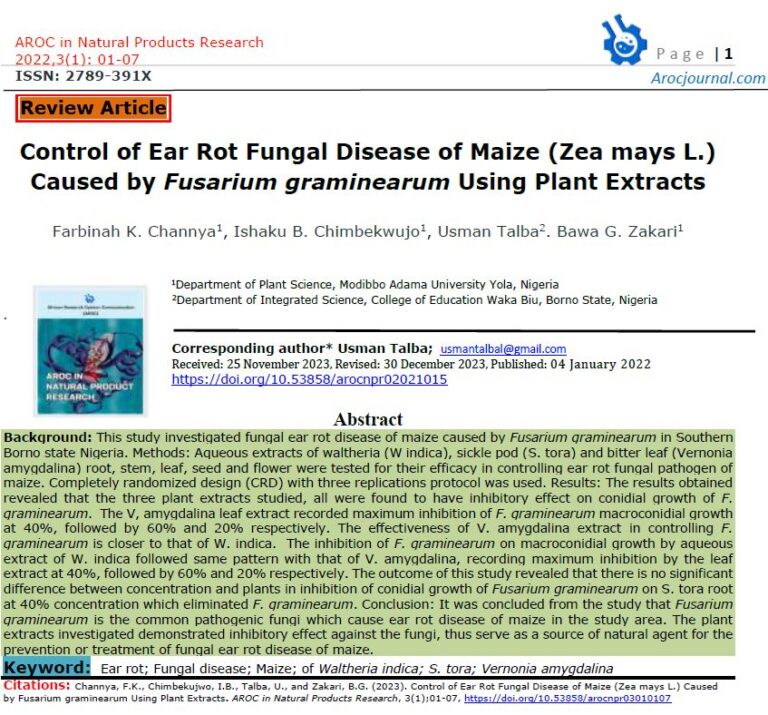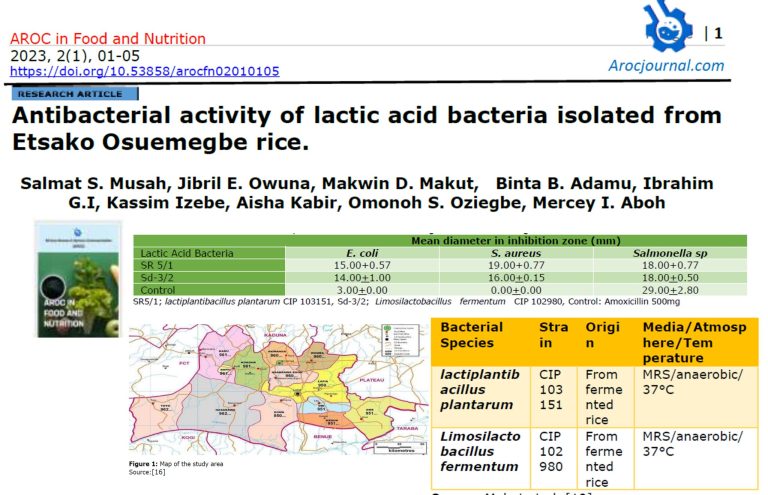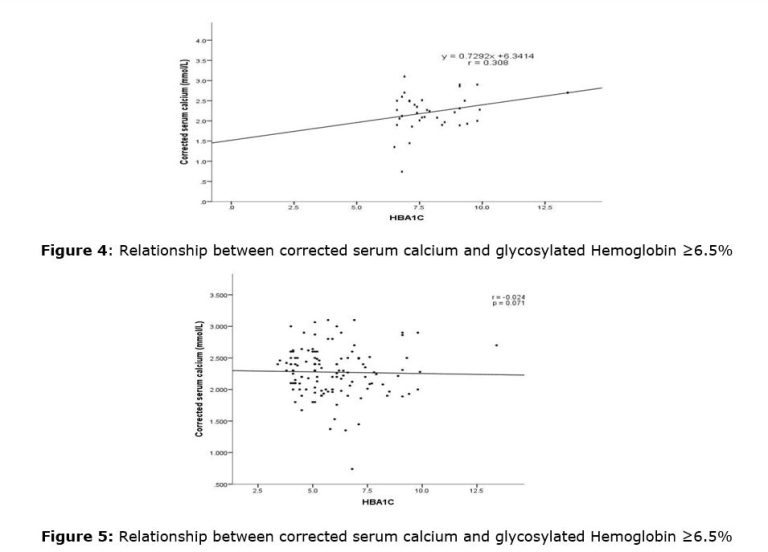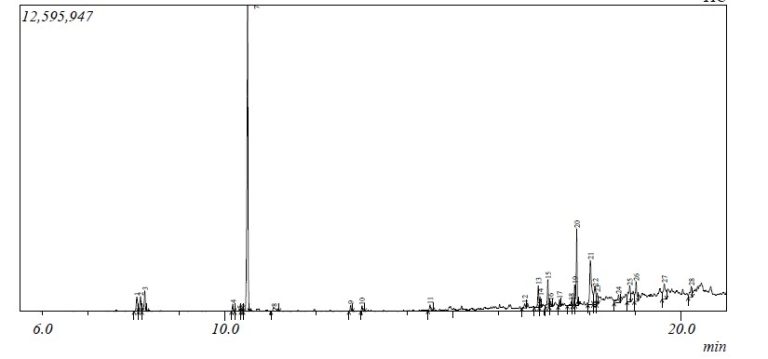1.0 Introduction.
Cardiovascular disease (CVD) is globally known as a deadly disease with varying mortality rates from country to country [1]. The majority of CVD death occur in poorer regions of the world from mostly stroke and heart attack [2]. This could be attributed to the fact that people from low socio-economic countries switch their lifestyles to accommodate unhealthy dietary habits and unhealthy behaviour as a means of survival. They may also be prone to other risks factors of CVDs [1, 3].
There are so many edible and nutritious plant crops in forest reserves that are not yet being discovered nor utilized. Icacina senegalensis plant is one of the under-exploited plants [4] which belongs to the family of Icacinacaea [5]. It grows naturally on both farmlands and fallow lands. It is also cultivated especially in Senegal, Nigeria, and other parts of Africa [6]. It is commonly found competing and mimicking yam plantation, as a result, the name ‘false yam’ was originated. Thus, some elites refer to it as ‘illegitimate’. The plant was reported to contain some anti-nutrients [7] such as saponin, phytates, flavonoids, tannins, and alkaloids but at non-toxic levels [8] which can be effectively removed by hot water [9].
These have contributed to the poor exploitation of this plant as food. Nevertheless, it is eaten in some parts of West and Central Africa such as Nigeria, Senegal, and The Gambia, especially as emergency food during food scarcity. Every part of the plant is essential; the fleshy tuberous roots, seeds, and fruits are utilized as food while the leaves are used as medicine. The flours from the tuberous root when soaked dried (SD) and when soaked, then boiled (SB) were reported to contain 3.64, 5.03 per cent protein, 3.82, 1.56 per cent crude ash, 10.59, 6.28 per cent moisture, 3.85, 1.56 per cent crude fat, 70.5, 82.30 per cent carbohydrates, 88.41, 93.27 per cent dry matter, 8.27, 5.96 per cent crude fibre, and 328.71, 350.84 per cent energy respectively [10].
Different dietary inclusion levels (30. 60, 90 g/kg) of processed (soaked and boiled) Icacina senegalensis improved the feed value of broiler chickens [11]. Hence, the objective of this study is to determine the changes following the administration of 10, 20, and 30 per cent inclusion of soaked-dried and soaked-boiled Icacina senegalensis in a normal rat diet through the assessment of the cardiovascular risk- Serum Lipoprotein profile: ‘Total Cholesterol, Triglyceride, High-Density Lipoprotein (HDL), Very Low-Density Lipoprotein (VLDL) and Low-Density Lipoprotein (LDL)’.
2.0 Methods
2.1 Sample collection and identification
The tubers of Icacina senegalensis were purchased from the wild in Akpabuyo local government, Cross River State. These were identified and authenticated by a Taxonomist in the Botany Department, the University of Calabar with voucher specimen number 0620.
2.2 Sample collection and processing
Icacina senegalensis tubers were peeled, washed, and cut into tiny pieces (about 2 cm in size). The pieces were soaked in water for three (3) days with a daily change of water, after which it was divided into two portions; Soaked-Dried (SD) and Soaked-Boiled-Dried (SB). SD portion was drained and oven-dried at 40 oC while SB portion was boiled for 30 minutes, thereafter drained and oven-dried at 40 oC.
Both SD and SB samples were then pulverized into respective flours and were formulated into 10, 20, and 30 per cent of the respective flours by adding 90, 80 and 70 per cent respectively of normal rat chow. The flour and rat chow were blended for each supplemented portion and prepared into a thick homogenous paste by adding boiled water. The resulting paste was pelletized manually and oven-dried at 40oC. Each pelletized feed was stored in a capped container and labelled appropriately awaiting the feeding experiment.
2.3 Animal Grouping/Experimental design
A total of 42 Albino Wistar rats were used for this research. The rats were purchased from the Animal House in the department of Biochemistry, University of Calabar. The animals were allowed to acclimatize for two weeks in the animal house with a room temperature of about 23 oC. Ethical approval for the use of albino Wistar rats was issued by the Department of Biochemistry Ethical Committee, Federal University of Technology Owerri. The rats were then grouped into 7 with six (6) rats each. Group 1 (normal/control) was given 100 % normal rat chow, groups 2-7 were placed on the graded diets according to the design in Table 1. The feeding was done for 30 days. The animals were given free access to food and water
Table 1: Animal Grouping/Experimental design
| Experimental group | Number animals | Percentage of Icacina senegalensis administered |
| Group 1 (control) | 6 | Animal feed (100 %) |
| Group 2 (SD 10) | 6 | 10 % inclusion of soaked-dried I. senegalensis |
| Group 3 (SD20) | 6 | 20 % inclusion of soaked-dried I. senegalensis |
| Group 4 (SD30) | 6 | 30 % inclusion of soaked-dried I. senegalensis |
| Group 5 (SB10) | 6 | 10 % inclusion of soaked-boiled I. senegalensis |
| Group 6 (SB20) | 6 | 20 % inclusion of soaked-boiled I. senegalensis |
| Group 7 (SB30) | 6 | 30 % inclusion of soaked-boiled I. senegalensis |
2.4 Sample Collection and processing
At the end of the 30-day experimental period, the animals were weighed and sacrificed by the cervical dislocation method. Blood samples were obtained from the heart by cardiac puncture into plain bottles using a sterile needle and syringe. The blood samples obtained were allowed to coagulate and centrifuged at 2500 rpm for about 10 minutes. Serum was aspirated and refrigerated for further biochemical analyses
2.5 Analysis of Serum lipid profile.
Analytical Kit from Agape Diagnostics was used to estimate serum total cholesterol (TC) using CHOD-PAP Method according to NCEP (2001). High-density lipoprotein level was measured by “selectively precipitating chylomicrons, very-low-density lipoproteins (VLDL) and low-density lipoproteins (LDL) with phosphotungstate and magnesium reagent” at room temperature (according to the method of Bowman and Wolf) [12]. The low-density lipoprotein cholesterol level in the serum sample was estimated by the method described by Friedwalds et al [13]. Low-density lipoprotein cholesterol level is derived from the difference between the total serum cholesterol and the sum of high-density and very-low-density lipoprotein cholesterol levels.
Low-density lipoprotein cholesterol = Total cholesterol – (high-density lipoprotein cholesterol + very-low-density lipoproteins cholesterol).
Serum Triglyceride concentration was estimated by an enzymatic test (GPO-PAP) method [14]. Very-low-density lipoproteins -cholesterol in the sample was estimated by calculation described by Burnstein and Sammaille [15]. In this method, the very-low-density lipoprotein cholesterol level may be obtained by dividing the serum triglyceride value by five. Factor, five, is used on the basis that in fasting subjects with triglyceride concentration of 400 mg/dl. The very-low-density lipoprotein value to triglyceride ratio is fixed at one: five.
Very low density lipoprotein cholesterol (mg/dl) = Triglyceride (mg/dl)/5
Also, the method described by Browner [16], is used to determine the concentration of very-low-density lipoprotein in plasma. However, it is maintained that the relationship holds best when the triglyceride level is within the level of 500 ± 100 mg/100 ml.
2.6 Statistical Analysis
The results of this study were presented as mean ± S.E.M and statistically analyzed using one-way analysis of variance (ANOVA) with Statistical Package for Social Sciences, SPSS (version 20) window statistical software programme. Student “t” test was used for pair-wise comparison, and differences were considered significant at *p<0.05, **p<0.001, and ***p<0.001.
3.0 Results
Total cholesterol (TC) concentration increased significantly (p<0.05) all through the experimental group compared to the control group (Figure 1). Triglyceride (Figure 2) and very-low-density Lipoprotein (Figure 3) concentrations increase significantly (p<0.05) in SD10 and SD 20 compared to the control, while changes observed in SD 30, SB 10, SB 20 and SB 30 are insignificant (p>0.05) compared to the control group. However, high-density lipoprotein cholesterol concentration (Figure 4) increased significantly (p<0.05) in SD 20, SB 10, and SB 30 compared to the control. Moreover, the percentage ratio of high-density lipoprotein cholesterol: total cholesterol levels of SD 20, SB 10, and SB 30 groups are not significantly (p>0.05) different from the control group value, while SD10, SD30, and SB20 were significantly lower (p<0.05) when compared with the control (Figure 5). Also, Serum low density lipoprotein: high density lipoprotein concentration of SD 20, SB 10 and SB 30 are not significantly (p>0.05) different from the control value (Figure 6). Serum low density lipoprotein cholesterolconcentration was significantly higher in SD30, and SB20 when compared with the control group (Figure 7).







4.0 Discussion
Atherogenic index (AI) ‘calculated as LDL, is a measure of susceptibility to cardiovascular disease. In this study SD 20, SB 10 and SB 30 had lower AI (0.39, 0.58 and 0.61 respectively) than the control group (0.73) while the changes observed in SD10 was non-significant compared to the control group. This, therefore, means that the inclusion of SD 20, SB10, SB30 and SD10 in the rat diet did not have adverse effects on the heart. This could be attributed to its high neutral detergent fibre content and low levels of crude fat [7, 10].
‘Dietary fibre in tuber crops is known to have cholesterol-lowering effects as well as facilitating HDL-cholesterol absorption’ [17]. The interference of bile absorption by fibre could result in the excretion of bile in faeces. Thus, the liver could tend to produce more bile salts to replenish the lost ones. Consequently, the liver could increase the production of LDL-receptors, which are very vital in ensuring the availability of cholesterol pulled out from LDL cholesterol in the bloodstream, required for the production of bile salts.
This implies that more LDL- Cholesterol would be pulled out of the bloodstream, as more bile salts are synthesized. Similarly, cholesterol levels produced by the liver may be reduced or inhibited by short-chain fatty acid synthesized during the fermentation of fibre.Studies have revealed that LDL cholesterol can be reduced by five (5) per cent with an increase in daily fibre intake of about 5 to 10 g.The fibre content of Icacina senegalensis [11, 10] may account for the generally low AI observed in this study. Hence, the result of this study suggests that the inclusion of SD 20, SB 10, and SB 30 have a cardio-protective effect while groups of rats fed with SD 10 and SD 30 have no risk of cardiovascular disease on rats fed with it.
5.0 Conclusions
Dietary inclusion of flours of soaked dried (SD) and soaked-boiled (SB) Icacina senegalensis tubers at levels used in this study caused improvement in cardiovascular well-being in a rodent model. Further research is required to ascertain the cardio-protective effect observed in this study. Also, isolation and characterization of the active component of this tuber are essential. Thus, processed Icacina senegalensis tuber could serve as an alternative dietary supplement for both humans and livestock.
List of Abbreviations: Soaked-dried – SD; Soaked-boiled –SB; Total cholesterol –TC; High-Density Lipoprotein – HDL; Low-Density Lipoprotein – LDL; Very Low-Density Lipoprotein – VLDL; Triglyceride –TG; Cardiovascular disease – CVD; Atherogenic index –AI; Statistical Package for Social Sciences – SPSS
Acknowledgement: Not applicable
Authors’ contributions: NOE conceived and designed the study. HMA, CIN, MA acquired data, analyzed, and interpreted the obtained data, alongside NOE. All the authors were responsible for drafting the manuscript, reading and approving the final manuscripts.
Competing interests: No conflict of interest
Funding: The authors funded the research.
References
- Goyal A, Yusuf S. (2006). The burden of cardiovascular disease in the Indian subcontinent. Indian J Med Res, 124(3):235-44. PMID: 17085827.
- Sundquist, K., Lindström, M., Malmström, M., Johansson, S., Sundquist, J. (2004). Social participation and coronary heart disease: a follow-up study of 6900 women and men in Sweden. Social Science & Medicine, 58(3): 615-622. ISSN 0277-9536.
- Bucher, H.C., and Ragland, D.R. (1995). Socioeconomic indicators and mortality from coronary heart disease and cancer: a 22-year follow-up of middle-aged men. American Journal of Public Health, 85, 1231_1236. https://doi.org/10.2105/AJPH.85.9.1231
- Fay, J.M. (1991) Icacina oliviformis (Icacinaceae): A close look at an underexploited food plant. II. Analyses of Food Products. Economic Botany, 45:16-26
- Dalziel, J. M. (1990). Icacina: The useful plants of West Tropical Africa. 3rd Edition. London: Crown Agents Press.
- National Research Council. (2008). Lost Crops of Africa: 2nd Edition. London: Tropical Development and Research Institute.
- Dei, H.K., Bacho, A., Adeti, J., & Rose, S.P. (2011). Nutritive value of false yam (Icacina oliviformis) tuber meal for broiler chickens. Poultry Science Journal, 90: 1239-1244.
- Okoronkwo, C.U., Ogwo, P.A., Nwachukwu, N. O. & Etusim, P.E. (2014). Nutritional and Phytochemical Composition of Utu (Icacina Senegalensis) and Sycamore (Ficus Sycomorus). Journal of Environmental Science, Toxicology and Food Technology, 8:49-53.
- Yang, Y. B., Kayan, N., Bozer, B., Pate, C., Baker, A. M.& Gizir,U. (2007). Terpene degradation and extraction from basil and oregano leaves using subcritical water. Journal Chromatography, 1152:262–267.
- David-Oku, E., Ntaji, O. E., Edide, R. O., Obiajunwa-Otteh, J. I. & Akuodor, G. C. (2018). Nutritional and haematological benefits of sub-chronic feeding of processed Icacina senegalensis tuber flours in experimental animals. American Journal of Physiology, Biochemistry and Pharmacology, 8(1): 34-39.
- Dei, H.K., Amoako, E.A. & Mohammed, A. (2012). Effect of soaked/boiled false yam (Icacina oliviformis) tuber on the performance of finisher broiler chickens. Department of Animal Science, Faculty of Agriculture, University for Development Studies, Tamale, Ghana.
- Bowman, R. E., and Wolf, R. C. (1962). A rapid and specific ultramicro method for total serum cholesterol. Clinical Chemistry, 8: 215 – 235.
- Friedewald, W.T., Levy, R.I., Fredrickson, D.S. (1972). Estimation of the concentration of low-density lipoprotein cholesterol in plasma without use of the preparative ultracentrifuge. Clinical Chemistry, 18:499-502.
- Tietz, N.W. (1995). Clinical guide to laboratory test. 3rd Edition. Philadelphia: W.B. Saunders.
- Burnstein, M. A. and Sammaille, J. (1960). A rapid determination of cholesterol bound A and B-lipoprotein. Clinica Chimica Acta, 5: 601 – 609
- Browner, W. S. (1993). Determination of VLDL, LDL, DL in plasma. Scandinavian Journal of Clinical Laboratory Investigations, 53: 289 – 295.
- Brown, L., Rosner, B., Willett, W.W. & Sacks, F.M. (1999). Cholesterol-lowering effects of dietary fibre: a meta-analysis. American Journal of Clinical Nutrition, 69 (1): 30–42.


